Fauna of Terrafract's Regions
Northern Region
Frostclaw Predator
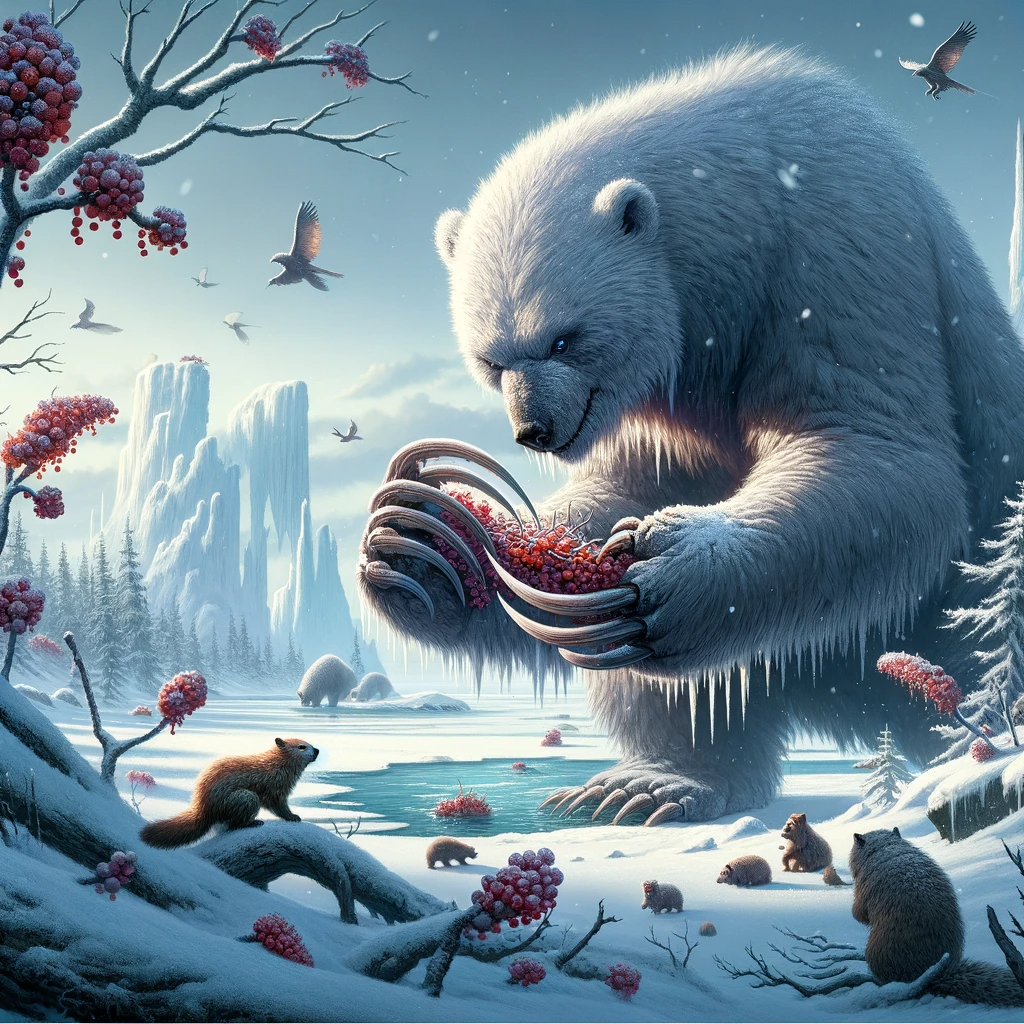
This massive beast is cloaked in thick frost-tinged fur which insulates it against the biting cold. Its large paws are fitted with razor-sharp claws that give it dominion over the snow-covered landscapes, and its daunting size ensures it reigns unchallenged by others.
This creature is usually found near frozen lakes or in Boreal Forests, where larger number of creatures and plants thrive. These locations are optimal hunting grounds year round. Despite its scary appearance and overwhelming strength this creature is an omnivor who enjoys eating Iceicle berries more than anything.
The Frostclaw Predator has white fur and is usually covered in icicles which dangle from its unkempt fur. When the creature walks those icicles hit eachother, making a beautiful sound that resembles wind chimes.
Borealis Wisp
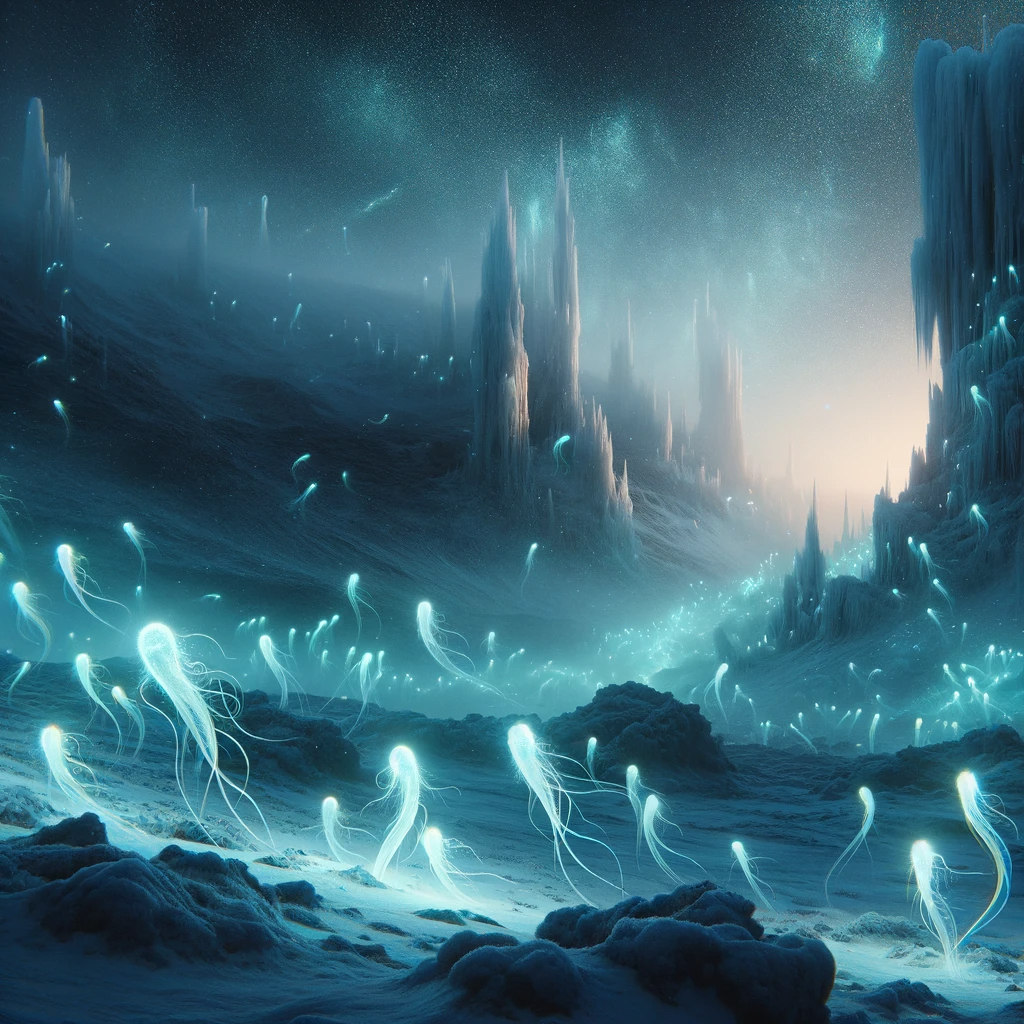
These delicate creatures float gracefully as their long apendages dangle behind them like ghostly veils. Their light serves as a beacon for other species and makes for a captivating spectacle against the backdrop of ice spires and the star-filled sky. These creatures survive by drifting around and consuming particles carried on the icy winds.
Borealis Wisps are in great abundance and dont have much intention behind their movement, making them easy prey for most medium sized creatures that roam the North. When they're ready to reproduce they make their way up the icy peaks, where they lay hundreds of tiny eggs. Once hatched they are already fully developed and begin to drift down the mountains where they can begin to find food.
Grey Hare

These small rabbbits are abundant in the North, sticking mostly to the Boreal Forests and lush tundras. They make their home by burrowing underground from within shrubs and bushes, which keeps their shelter hidden and protected from weather.
This creature survives by eating berries and roots that stick from ground. If it needs, the Hare can also jump very high to reach berries in trees. This cautious creature is rarely seen in groups and will run if it hears anything approaching. Its strong legs allow it to both jump high and far, however, its also surprisingly fast for such a small creature.
Crystal Scale

This northern fish is known for its beautiful scales that shine like crystals in sunlight. They are mostly found in frozen lakes, but will occasionally venture up rivers to find underground alcoves where they can lay their spawn. The scales are not only beautiful but are also very tough, making them a challenge for most creatures to eat.
The crystal scale has gained a unique adaption in which it builds up a thick layer of ice around its body, which surprisingly doesnt encumber its movement. This adaption is what gives the scales their crystal like glimmer and increased durrability.
This fish survives by eating other small fish and water insects. In spots where the ice has been broken these fish will jump out to grab small creatures that are drinking water, pulling them under and drowning them before eating them.
Aurorix

This carnivourous creature is found is very small packs of 1-5, generally sticking with their families until they die or are separated by other means. These creatures roam the barren plains and tundra, working in groups to hunt smaller creatures like Grey Hares or Blizztails that are often found alone.
There have been a few sightings of these creatures in larger packs of 10 or more, and these groups have been reported to hunt larger creatures like Frostclaw Predators with varrying levels of sucess. However, these larger groups are usually dwindled down to only a few due to either alack of food or by being hunted by other creatures. Their main predator is the Frostfeather Scavenger who stays high above and swoops down, grabbing one or more of them and dropping them from extreme heights.
Blizztail

This extremely timid creature avoids contact with all others, immediately running away if it hears something approaching. This creatures most prominint feature is its large fluffy tail which it wraps around itself when trying to sleep. Durring severe weather this creature will use its tail to protect itself from the harsh, cold winds.
As a herbivore this creature usually eats berries that fall from trees and any other low hanging plants it can find. This creature finds shelter in fallen trees and large bushes which it carves out to create a shelter.
This creature has a light grey coat of fur and its large tail is a clear white color. These colors help it blend in with the cold and dull environment of the North. When it wraps its tail around itself it appears almost invisible from a distance.
Frostfeather Scavenger
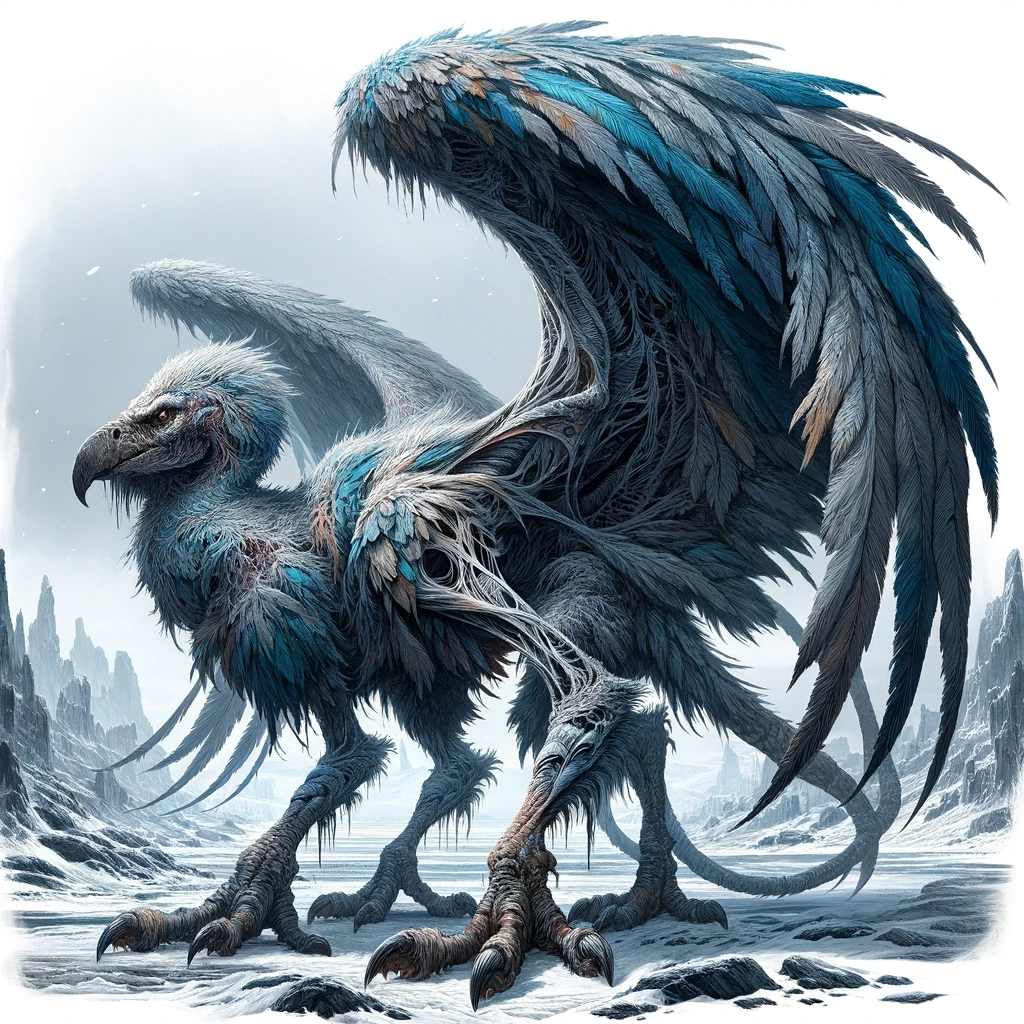
Southern Region
Canopy Glider
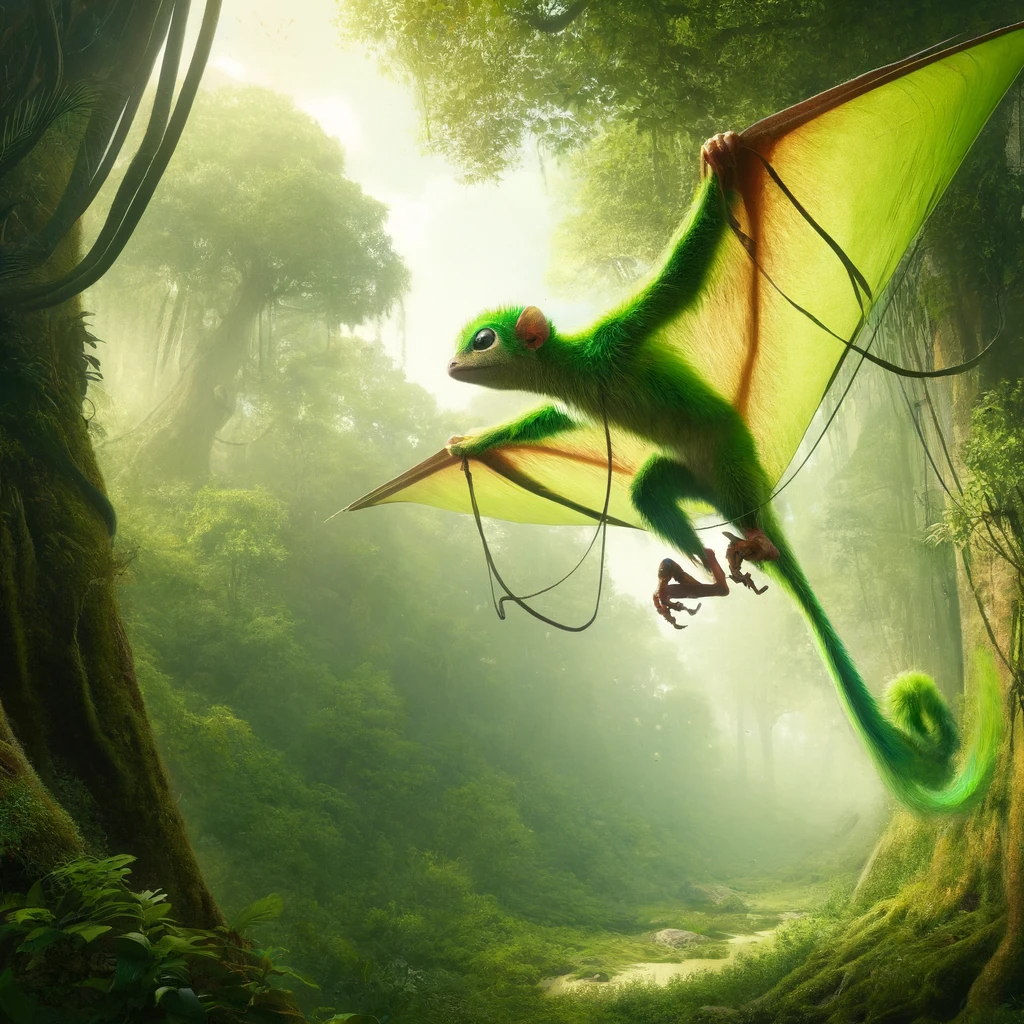
This creatures vibrant green fur blends seamlessly with the verdant canopy, while the translucent wing membranes stretched between its limbs allow it to sail silently from tree to tree. Its tail serves both as a rudder and a counterbalance. This creature's keen eyes are adapted for three-dimensional navigation through the layered forest terrain.
Vibrant Dartfrog
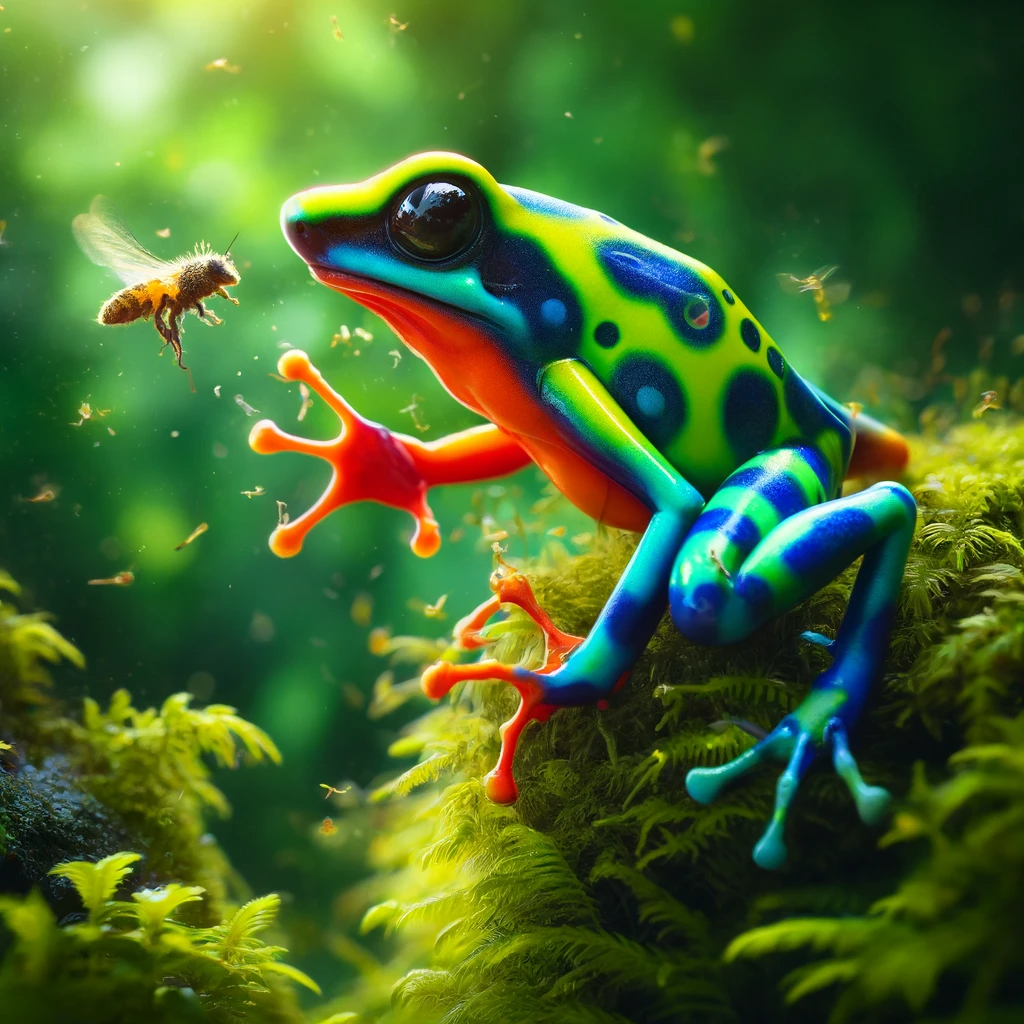
This creature is known for its brightly colored skin and toxic defense mechanism. Its skin helps it blend with the vibrant flora and its wide toes allow for skillful movement through the terrain. This frog is an efficient insect hunter who thrives in the lush forests near bodies of water.
Eastern Region
Tidepool Stalker
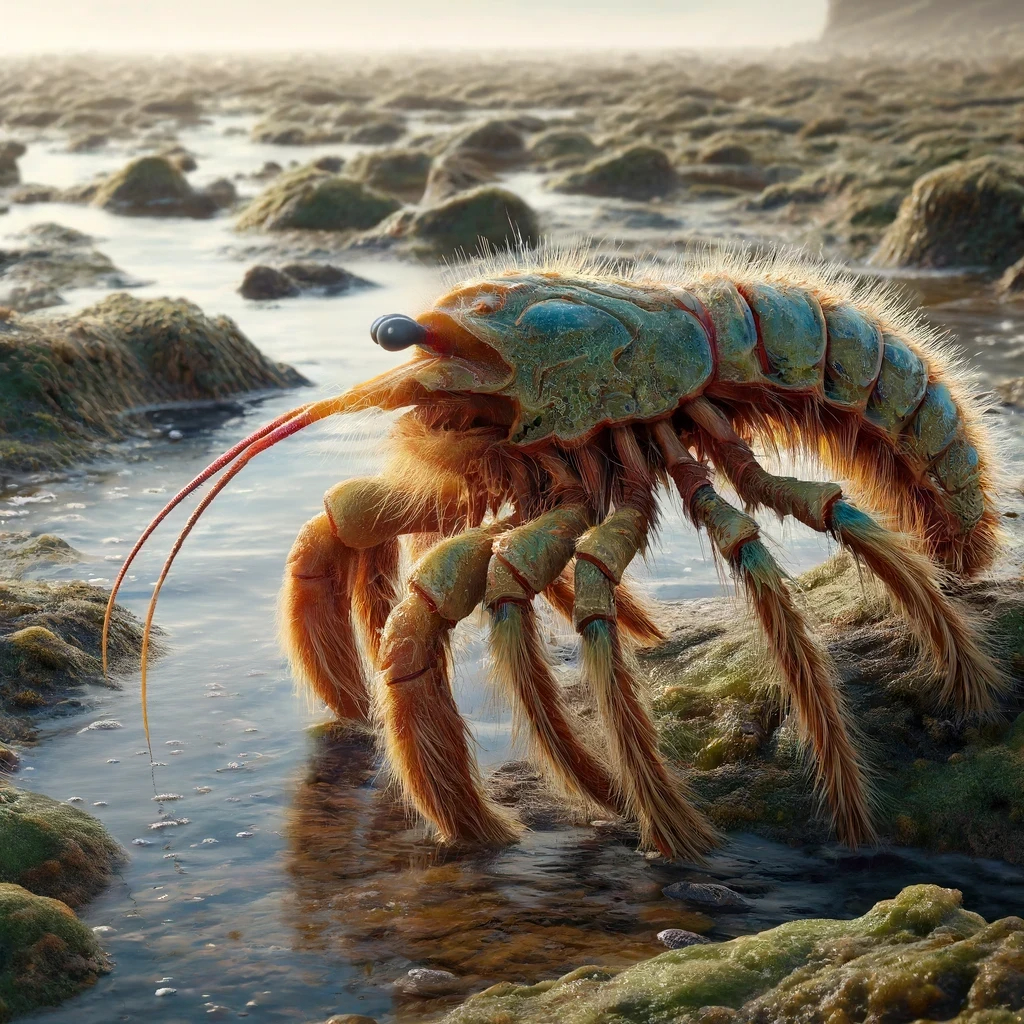
A medium sized crustacean that hunts in intertidal zones, balancing the coastal ecosystem. It has small hairs coming from the creatures entire body giving it a look that almost resembles fur. Its hard shell reflects nearby colors and its short legs move quickly as it crawls on the ground near rivers.
Cliffside Crawler
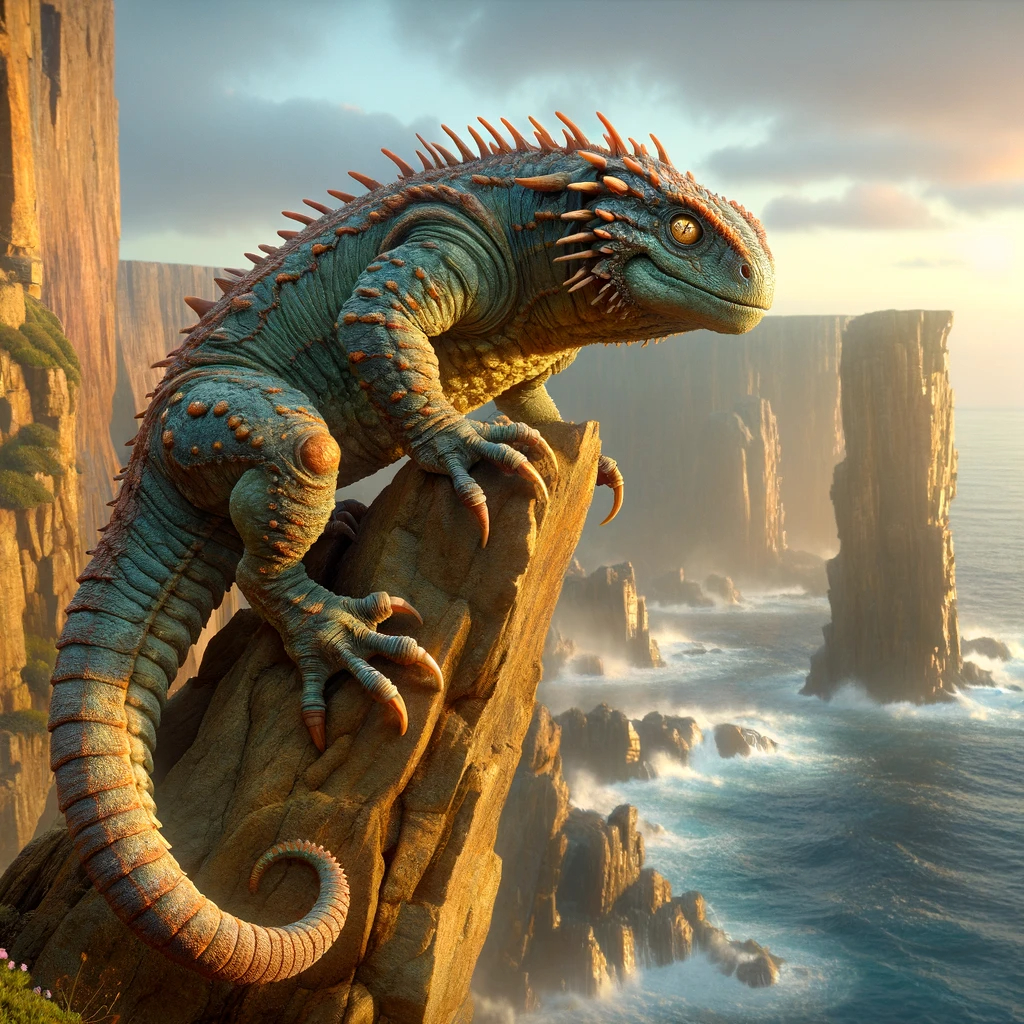
A reptile that has adapted to navigate the rocky cliffs of the coast. This creature has a short tail and a chunky body. Its jagged retractable claws allow it to easily cling to the sides of rock as well as hunt other small creatures. The creature has a colorful set of strong scales which give it a radiant shine during sunrise.
Western Region
Dune Skitter
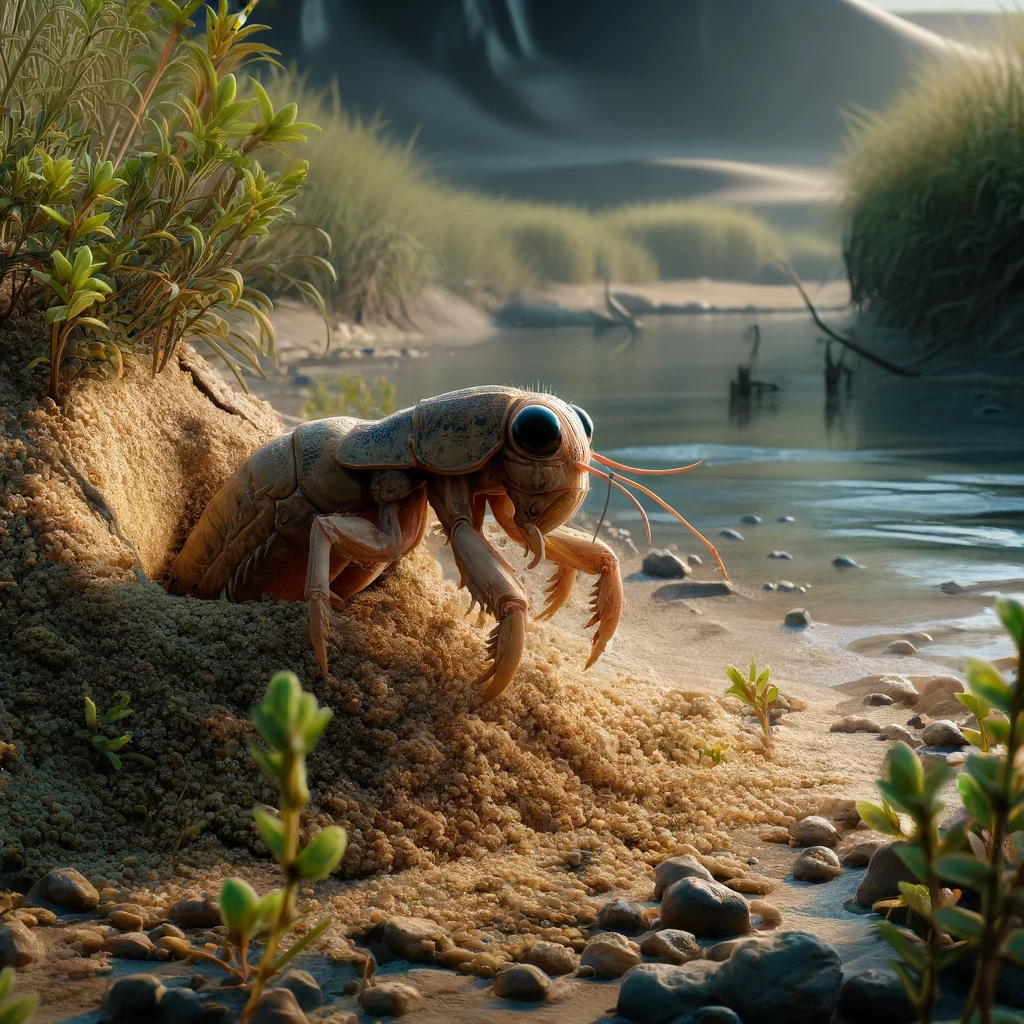
A small insect that burrows in sand during the night. During the day the Dune Skitter ventures into the marshes of the west in order to eat the abundant vegetation if they cant find other insects to eat near their burrows. The dune skitters usually burrow close to rivers and wet areas, where there are more insects and water sources.
Swampwillow Stiltwalker
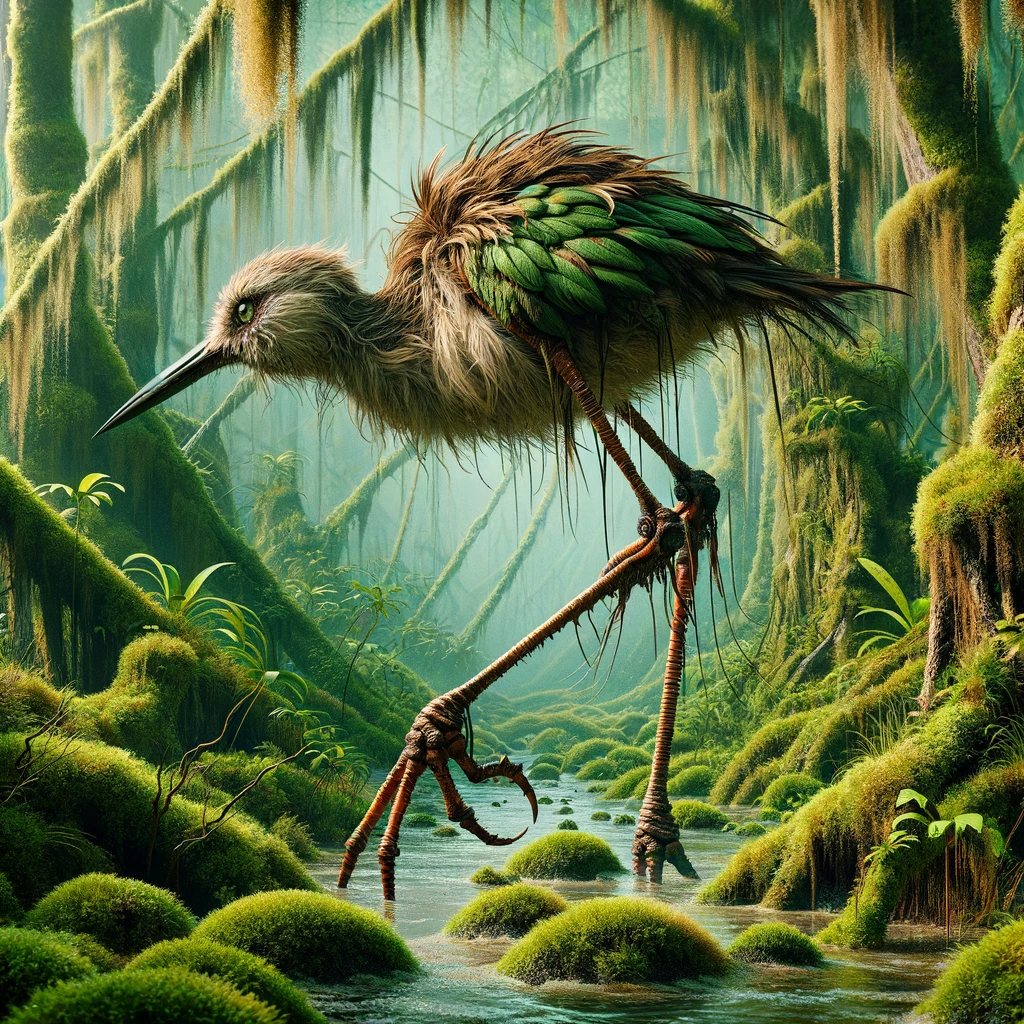
A scruffy bird with long legs that allow it to navigate the marshes. Its long sharp claws easily tear through the moss and vines that cover every corner of the marshes, allowing it to reach into small crevices. Its brown and green feathers help it blend in with the colors of the trees, where these birds rest and make their nests.
The Wastes
Sandshifter Beetle
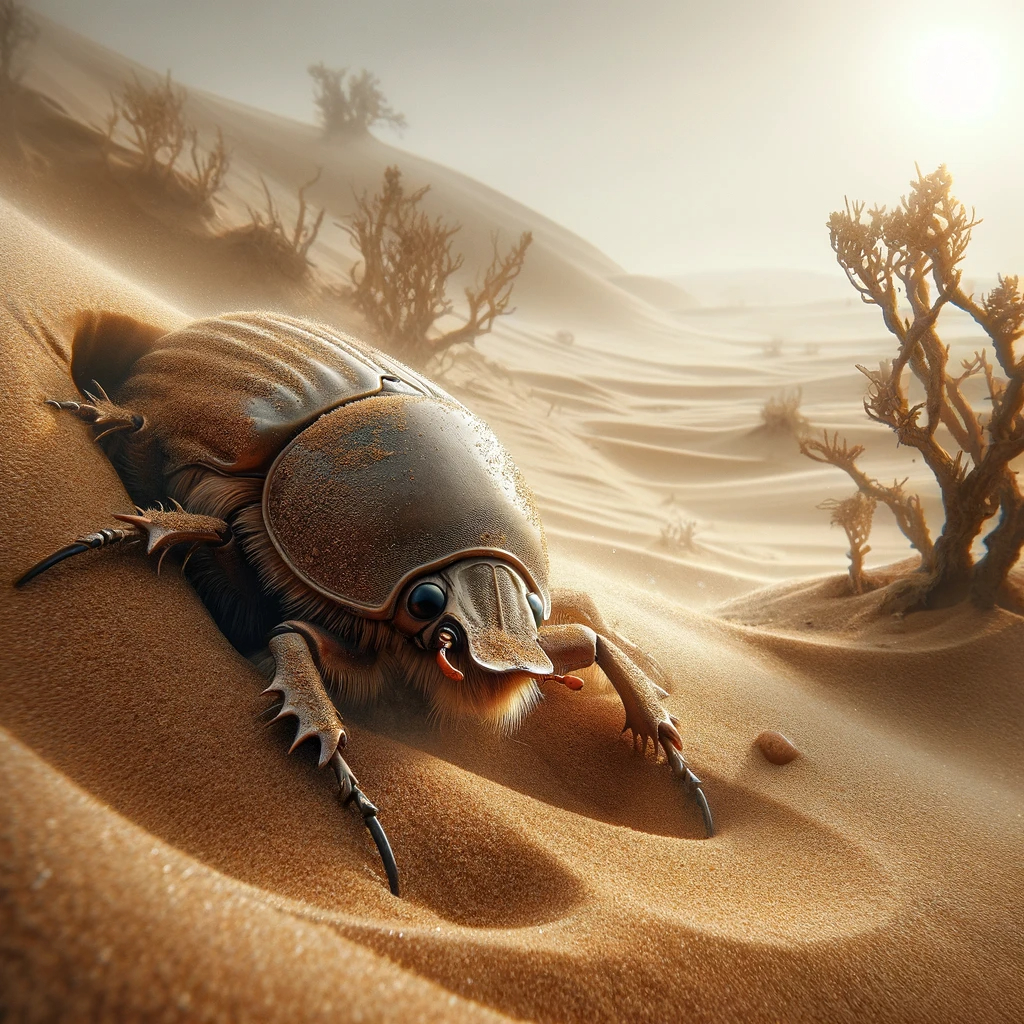
This desert dwelling arthropod burrows into the sand, emerging at night to feed on the light vegetation. Its hard exoskeleton protects it from other small insects and its hard long arms allow it to quickly dig into mud or sand.
Duskprowler Jackal

These nocturnal canines roam The Wastes in packs, their long matted fur protects them from the sandy winds that frequent the region. These creatures are small but live in large groups. To sustain their large groups these creatures are constantly scavenging and hunting.